SOYLENT GREEN (1973)
In a dystopian future, a cop stumbles across a powerful corporation’s horrifying plan to feed humanity...
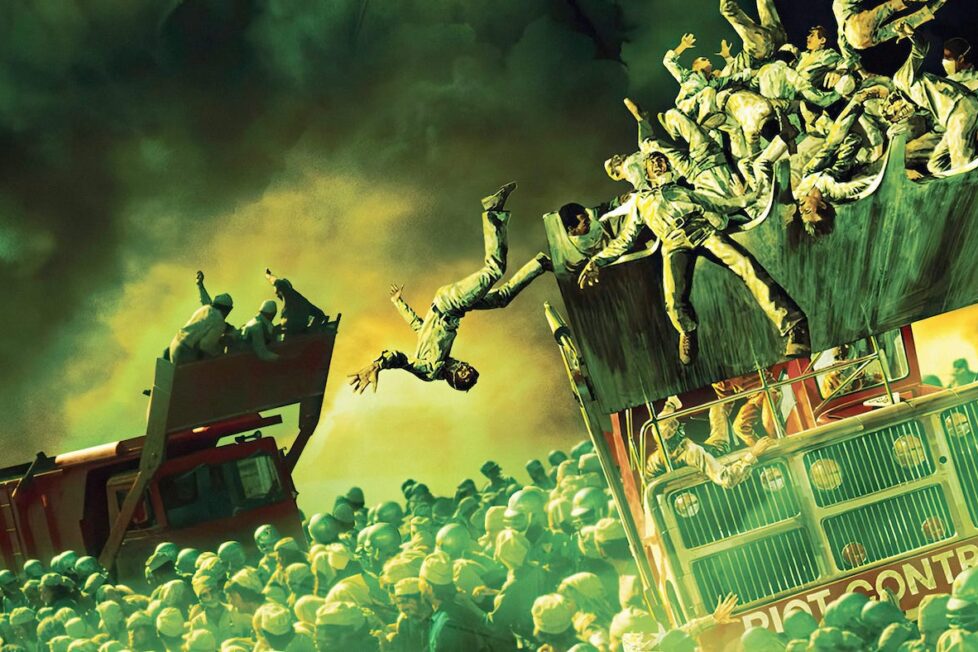
In a dystopian future, a cop stumbles across a powerful corporation’s horrifying plan to feed humanity...


There’s no getting round it: the most powerful scene in Soylent Green is spoiled by the intrusion of the star and the plot. After Sol (Edward G. Robinson) decides to volunteer for euthanasia in the desperately overcrowded then-future New York City of 2022, he’s promised—as a kind of final reward for his selflessness in helping to ease the problem—a precious 20-minutes of peace and space, two things almost completely absent from most people’s lives in this grim future. In the room where he’ll die, his final moments of solitude are accompanied by classical music and films of animals and nature: glimpses of a world that to those living in Soylent Green’s version of 2022 seems like a lost Eden.
It’s a poetic, moving sequence without words, which doesn’t need them, and its importance is confirmed later when some of the music is reused during the end credits. However, after it’s been allowed to unfold for a little while, Thorn (Charlton Heston) rushes to a communications device outside the euthanasia room and urgently demands Sol’s attention—not only distracting the old man from his happy final reverie but the audience too, and underlining the central problem with Richard Fleischer’s film.
Though it didn’t actually come to pass, Soylent Green’s world remains unsettlingly believable and fascinatingly detailed. But the detective procedural based around Thorn which is inserted into it is, if not quite unbelievable, certainly not fascinating.
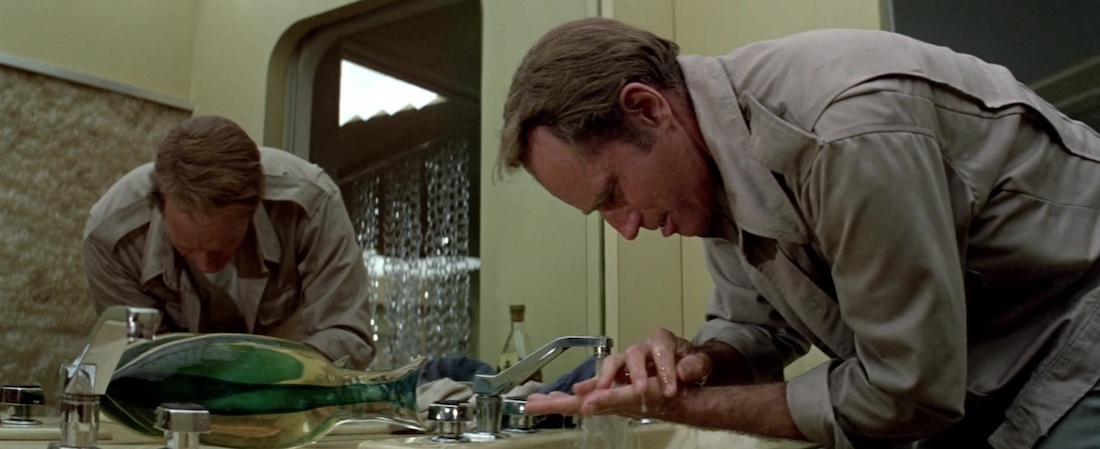
The film begins, too, with footage of the old world: first with black-and-white photos starting from around 1900, showing families and farms, then cars, and the growth of New York City; and then colour images, and a faster montage of more and more cars, and more and more people, and buildings, and trash, and smokestacks… and then we are plunged into the 2022 from which Sol is seeking release.
It’s a world crowded to breaking point, and though we only see NYC we’re told that other cities (and, presumably, other countries) are much the same. There are people everywhere; Thorn has to pick his way through them, huddled sleeping on the stairs, to reach the tiny apartment he shares with Sol. Only a few mega-rich live in spacious homes, protected from the masses by moats and guards. They have air conditioning, but everyone else languishes in a perpetual heatwave (one aspect in which the film was strikingly prescient: the term “global warming” had not even been coined at the time of Soylent Green, and although the idea of climate change was starting to reach the public consciousness, cooling was often considered more likely). The only remnant of nature surviving in the city is one tiny tree sanctuary, beneath a tent.
Beyond New York’s limits, what open space remains is given over to farmland; the staple diet is Soylent, manufactured by a corporation of the same name. The book explains that this brand name derives from soy and lentil, although this is not mentioned in the movie, and a popular new version—branded Soylent Green—is said to be made from plankton instead. This particular product is only mentioned in passing for most of the film, but turns out to be highly significant both for this specific storyline and for the future of Soylent Green’s world in general. Whether the colour has any meaning is unclear; the word “green” was not in 1973 quite as strongly associated with environmental issues as it is now, so it may have been random.
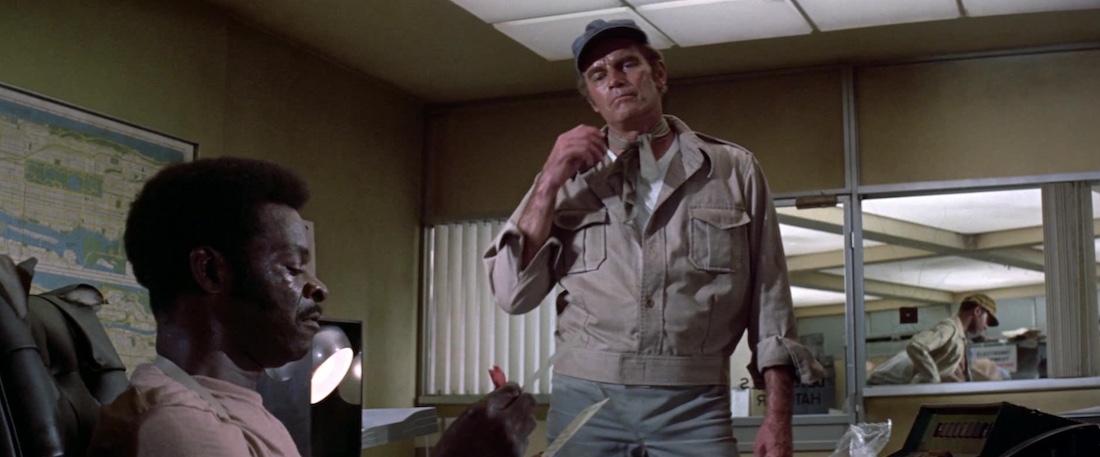
People are, unsurprisingly, unhappy. Riots are frequent. We see protesters scooped into garbage trucks in a brutal scene which, depicting the way they are treated as dehumanised waste, hints quietly at a secret to be uncovered much later. There are a hundred murders a day, and the police have pretty much given up trying to solve them, unless the victim is someone important like Simonson (Joseph Cotten), a member of the Soylent Corporation’s board who lives in one of those fortified apartment blocks.
The perpetrator of Simonson’s murder is never a mystery to the audience: it is an impoverished young man, Gilbert (Stephen Young), who has been given the job by Donovan (Roy Jenson), clearly representing some shadowy organisation. But Gilbert is only a minor figure in the movie, and indeed one of the film’s biggest departures from the 1966 source novel Make Room! Make Room! by Harry Harrison is his lack of prominence—the novel’s equivalent character, under a different name, is just as important as the detective. (The other major difference is the famous revelation near the end about Soylent Green itself, completely absent from the book. Harrison was not involved in the movie, and didn’t like it much.)
The killer’s identity is not known to Thorn, though, and the storyline of Soylent Green nominally follows his investigation into the crime. Along the way he meets, and quickly develops a relationship with, Shirl (Leigh Taylor-Young); she’d been a kind of concubine for Simonson, described as “furniture” and rented out along with the apartment. He also meets Fielding (Chuck Connors), the dead man’s bodyguard, and a much more sympathetic character in the book. And he is assisted on the case by Sol, who along with other “books”—older people who, presumably, remember the days when libraries and universities still existed—helps by providing research.
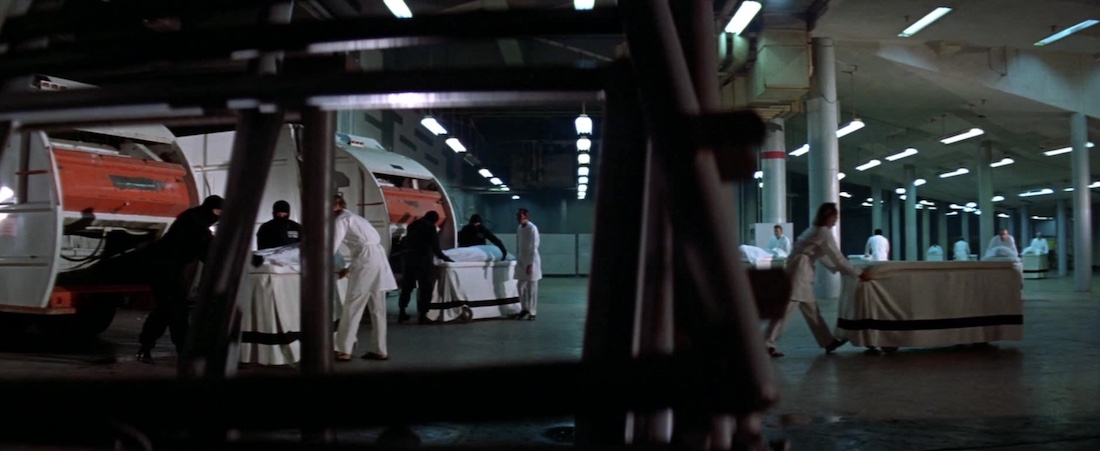
The real interest of Soylent Green, though, comes not in this narrative but in the world-building. So many little touches, not heavily commented on but just put there for the audience to notice, make such perfect sense: the way that Sol pedals away on an old bike to charge up batteries before the power goes off again; the way that everyone wears hats to protect against the heat and dust; the high security at a shop selling single tomatoes for a fortune; Thorn’s wonder at soap, hot water, and ice in Simonson’s apartment; the way that Thorn steals a spoonful of priceless strawberry jam from Fielding’s apartment.
Though it was filmed in southern California, both exteriors and interiors convince as New York (albeit a warmer one), and if the city of ordinary people comes across as completely real, the lives of the rich seem only slightly exaggerated. The interior design of Simonson’s apartment has a slightly 2001: A Space Odyssey (1968) aesthetic, the doorman’s uniform has some of the flamboyant costume style of The Hunger Games (2012). “You think they’d be grateful for what they’ve got here,” says this doorman, Charles (Leonard Stone), of the “furniture” women like Shirl, and indeed the deprivation that dominates the film is so all-encompassing that when silk sheets finally appear, they give the impression of being extraordinarily luxurious.
Among the cast, Robinson’s beret-wearing ex-professor, sharp but slightly irritable, is the highlight; it was the actor’s last role and he must have known during the filming of Sol’s death scene that his own was imminent. In a smaller part, Brock Peters as the chief of detectives is a man convincingly caught between wanting to do the right things and needing to please his superiors. Taylor-Young isn’t given enough opportunities by the screenplay to really develop her character beyond token girlfriend; Lincoln Kilpatrick as a priest who has heard Simonson’s explosive confession is also not helped by the script, but hams it up dreadfully anyway.
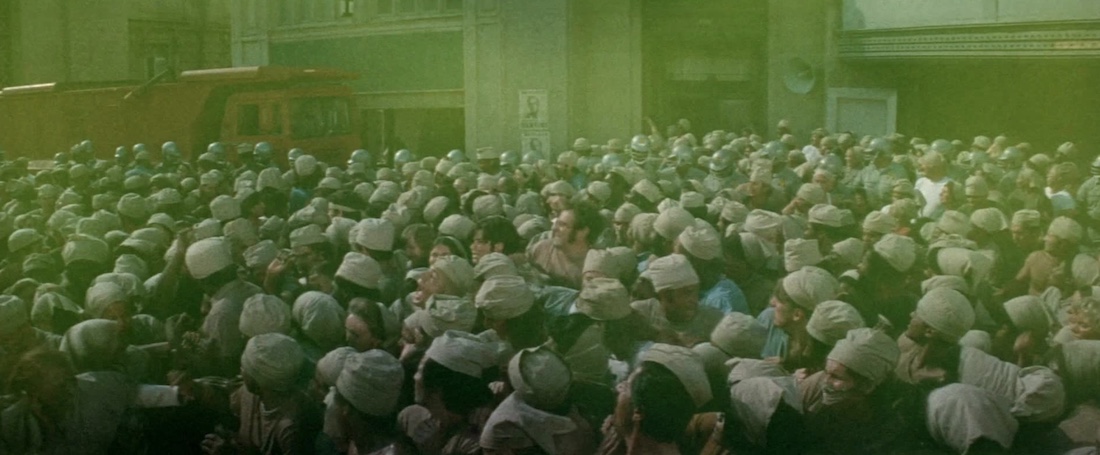
A bigger problem in terms of acting is Heston, who may simply not have been appropriate for this part. He stands for us, of course, and so he’s not supposed to be very remarkable: he recalls a little of the old days but not nearly as much as Sol, and therefore is less constantly troubled by their disappearance (though his tears at the nature scenes projected over Sol’s deathbed suggest memories coming back). He isn’t radical, and though he tries to do the right thing, he largely accepts the system; he just dislikes the pervasive discomforts.
To some extent Heston’s blandness suits this character, but the actor cannot help being too square-jawed and too heroic to really convince as a tired everyman—dressed more like an electrician than a detective—who stumbles across a great conspiracy. Someone less assertive and less physically commanding might have worked better.
Soylent Green performed only adequately at the box office, perhaps because of its own essential uncertainty about what kind of film it was trying to be: its relentless pessimism could hardly provide the relatively undemanding entertainment of bigger hits that year like Live and Let Die (1973) or The Poseidon Adventure (1972), but the way that so much of it is given over to a rather humdrum cop plot meant it also failed to achieve the visceral horror or the intellectual dimensions of The Exorcist (1973). Critics were mostly not impressed, and even those who did find something positive to say were divided on whether a merely workmanlike detective story was let down by a fanciful setting, or enhanced by an interestingly different vision of the future.
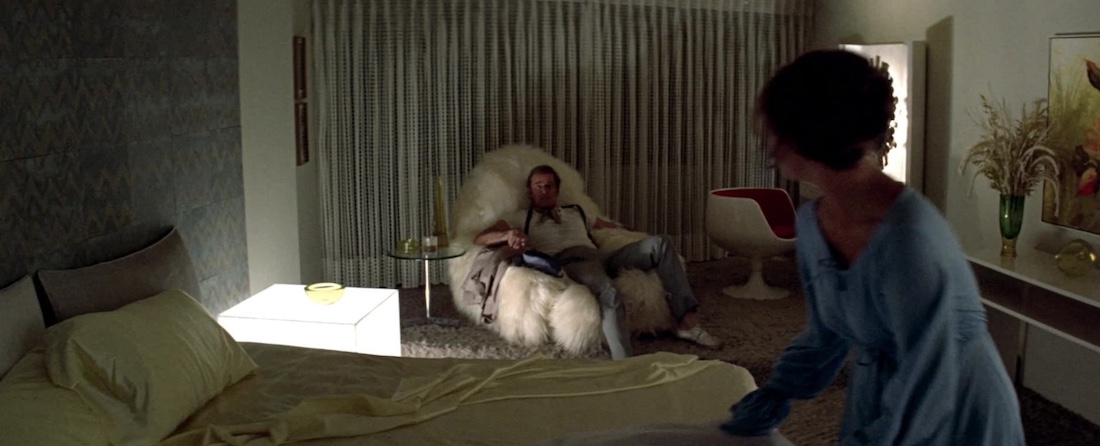
Roger Ebert fell into the latter camp, and as so often was spot-on, suggesting that “the detective story is mostly just an excuse to keep us interested from one end of the movie to the other. Soylent Green’s real achievement is to create a 21st-century world.” Of course, the film has benefited greatly from hindsight; climate change and the strains that population puts on resources are thoroughly mainstream issues now, no longer as in 1973 the province of a few activists viewed by many as eccentric. Indeed, although the population of New York City has only grown by around 10% since the film’s production (not the roughly 400% that Soylent Green posits), the global population has doubled.
But it is not just Soylent Green’s accurate identification of very real problems—in the big picture, if not the details—that makes the movie credible. It is also plausible simply because it makes sense: nearly all the differences between Soylent Green’s imagined 2022 and the real 1973 do flow logically from uncontrolled population growth. And the film’s writing, direction and design keep them constantly in our mind even when they’re not to the foreground.
Fleischer is not generally well-regarded as a director (Pauline Kael, for example, saw him as little more than a bland hack) and he certainly did not take the kind of risks that appealed to many film-makers at the time, but he frequently handles locations and atmosphere very well, from the antebellum plantations of the underrated Mandingo (1975) and the rural Colorado of Mr Majestyk (1974) to the foreboding Boston of The Boston Strangler (1968) and the London of 10 Rillington Place (1971). If nothing else, the way that the world of Soylent Green hangs convincingly together is another example of this.
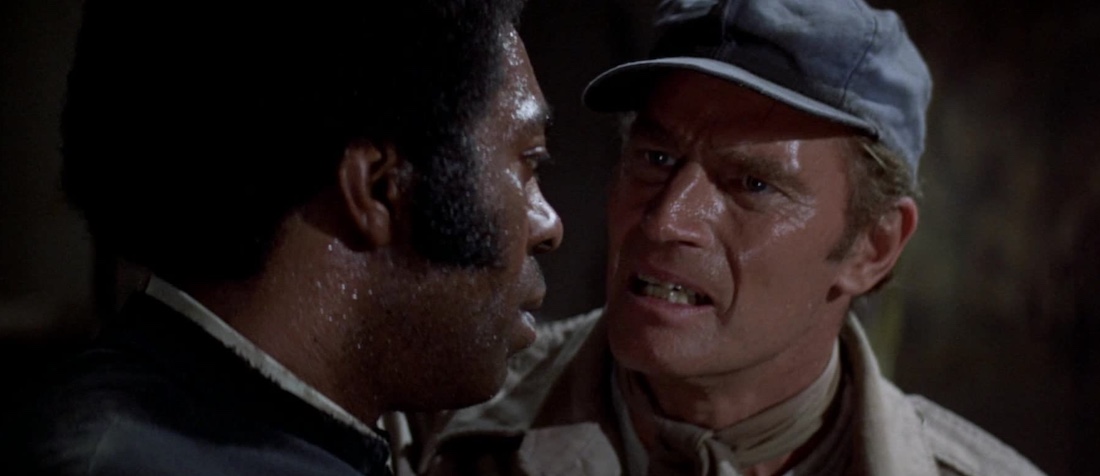
It is also one of the stronger entrants in the 1970s cycle of environmental warning or eco-disaster films, which produced minor classics like Silent Running (1972) and The China Syndrome (1979) as well as a slew of mutated-creature features. Good, bad or just plain odd—like Robert Altman’s baffling Quintet (1979)—these films are often distinguished by being much, much darker than later equivalents like The Day After Tomorrow (2004), and perhaps more sincere in their warnings.
True, Soylent Green isn’t the best of them, despite its imaginative strengths—for which much of the credit must go to Harrison, while most of the weaker elements are specific to the movie. It seems to lack the courage of its convictions; it doesn’t need a big conspiracy, leading to a conveyor belt of shrouded corpses, to be horrifyingly dystopian (especially given its relatively short running time). Indeed, the interruption of Heston’s Thorn into Sol’s death scene typifies the way the movie seems overanxious to ramp up the drama, when in fact the moment would be even more powerful without it.
Harrison’s more ruminative, less melodramatic novel works better in this respect, though it’s also fair to say that both book and movie are a little incoherent about class. The luxuries enjoyed by Simonson and his kind are (especially in the movie) disapprovingly contrasted with the straitened existence of everyone else, yet the masses are not suffering because a small minority are rich; it’s made quite clear that population is the problem, and it’s unlikely that the larger homes, or the tiny quantities of real meat and vegetables and fruit, that a few wealthy people can afford make any real difference to the overall shortage of resources. The Soylent Corporation is presented as villainous, and certainly is engaging in some very dubious activity, but the implication that it is to blame for the whole state of affairs doesn’t really stand up.
In that, though, Soylent Green is a product of its times—distrust of big business was de rigueur for the 1970s, especially in a movie of this type. And if we make some allowances for its unwillingness to stray too far from an audience-pleasing template (lone detective uncovering evil corporate conspiracy), it remains one of the era’s most vivid visions of a disastrous future.
USA | 1973 | 97 MINUTES | 2.39:1 | COLOUR • BLACK & WHITE | ENGLISH

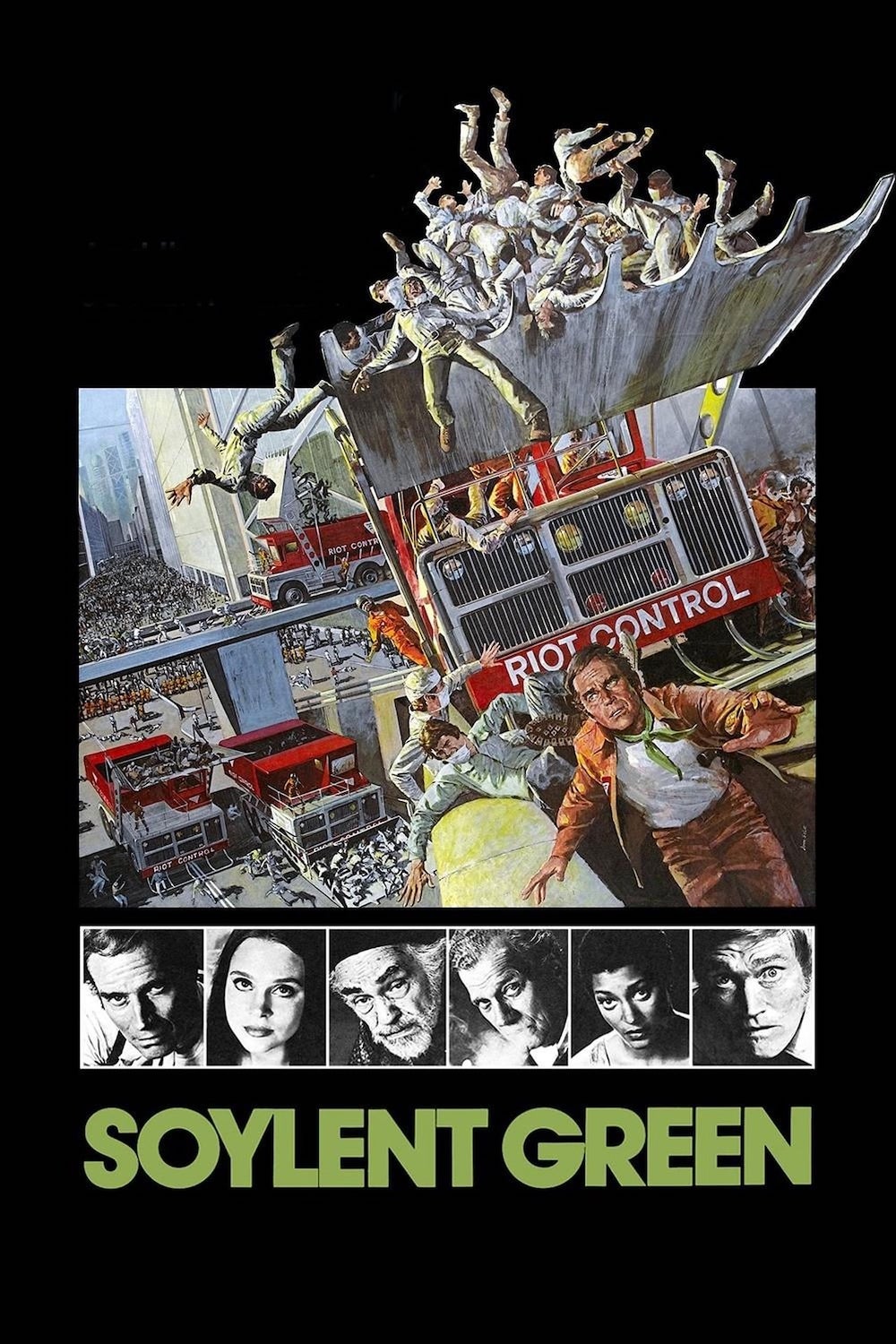
director: Richard Fleischer.
writer: Stanley R. Greenberg (based on the novel Make Room! Make Room! by Harry Harrison).
starring: Charlton Heston, Leigh Taylor-Young, Edward G. Robinson, Chuck Connors, Brock Peters & Joseph Cotten.
